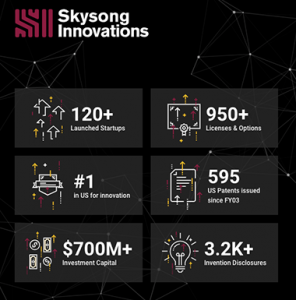22 Mar The Impact of Utilizing Expertise to Project Risk and Performance
*This is a summary and analysis of the following publication. For full references and research details, please see original publication.
Gunnoe, J., Rivera, A., & Feenstra, D. (2020). The Impact of Utilizing Expertise to Project Risk and Performance. Journal for the Advancement of Performance Information and Value, 12(2), 47-47.
Available at: http://journal.cibw117.org/index.php/japiv/article/view/125/124
Project Risk and Performance
Organizations are struggling to find effective project and risk management practices (Rivera, 2017). When looking at any industry’s performance, it is relatively lower than we would expect and has not changed very much in the last few decades. For example, the average percent of construction and IT projects delivered on time is 20% and 40% respectively. Their percent of projects delivered on budget is 32% and 43% respectively. Research has identified common risks (Algahtany, 2018; Le, 2019), but has not identified any conclusive methods to mitigate those risks in terms of an approach with documented performance results.
The Best Value Approach
 The Best Value Approach (BVA) has been identified as one of the few solutions documented to increase performance and risk mitigation. Rivera and Kashiwagi (2016b) analyzed 12 different project management methodologies and found that the focus of utilizing expertise to minimize risk was unique to BVA. The Majority of project and risk management models focus on increasing communication and collaboration. Unique factors of risk within BVA (Rivera, 2014) include:
The Best Value Approach (BVA) has been identified as one of the few solutions documented to increase performance and risk mitigation. Rivera and Kashiwagi (2016b) analyzed 12 different project management methodologies and found that the focus of utilizing expertise to minimize risk was unique to BVA. The Majority of project and risk management models focus on increasing communication and collaboration. Unique factors of risk within BVA (Rivera, 2014) include:
1. Experts are the only ones that can minimize/mitigate risk.
2. Experts have no risk in a project.
3. The greatest risk to a project is caused by nonexpert stakeholders.
4. Experts are able to minimize risk caused by nonexpert stakeholders through transparent planning and tracking.
Research Focus
Given the track record of BVA, this paper’s focus was to identify the impact the BVA framework can have with an expert vendor in terms of risk and performance. Research goes on to document and analyze the selection and execution of a project through the BVA.
The BVA has four different phases which include (1) a preparation phase use to create the RFP (2) a selection phase which uses 5 criteria including [level of expertise, risk assessment, value added, interview and cost] to select a single vendor. (3) a clarification phase which requires the selected vendor to present a detailed plan/scope to the client for approval and contract signing. (4) the execution phase in which the project is delivered.
Research Analysis
 In the analysis of the selection phase, the contractors were given 14 days to come up with the necessary documents. The awarded contractor identified that early coordination and preparation led to their success including:
In the analysis of the selection phase, the contractors were given 14 days to come up with the necessary documents. The awarded contractor identified that early coordination and preparation led to their success including:
1. Identifying experts for the project.
2. Identifying unique aspects of the project including risk.
3. Clarifying as many unknowns as possible with the client.
4. Coordinating schedules and expectations internally.
The awarded contractor noted that in the traditional low-bid system, contractors do not follow these early coordination steps. Alternatively, contractors will wait until the last minute to submit a bid to be able to deliver the “lowest bid”. In BVA, the contractor understands that unless they partner early on and begin early coordination, they will not be competitive in the process.
In looking at the clarification phase, it was identified that normally this type of planning happens after the award . Unique to BVA, the planning included listing action items from both the vendor and client stakeholders (normally contractors only focus on their own action items). Risk mitigation protocol was determined upfront, which saved time and energy as there was little lag time during the project. Most notable was the fact that due to proper clarification, adjustments could be made with little to no deviations to time and budget as it was early on. This would suggest even the impact to client change orders could be minimized with proper mitigation. Lastly, a weekly risk report was created and used to track progress.
Research Results
The project was procured 23% under budget for $3.8 million. The initial project was delivered on time and budget with a satisfied client, however there was an unforeseen change order causing additional work which added time and duration to the project. Eight risk mitigating actions were identified from the vendor. Seven were performed before the project was awarded. This finding was significant as it identified the majority of risk mitigation happens upfront, a step that traditional processes skip. The eight risk mitigating actions include:
1. Contractor identification of expert personnel on team pre-submittal.
2. Internal coordination of expertise to eliminate any contractor risk pre-submittal.
3. Upfront use of the lead expert in the planning phase and using less expertise during execution.
4. Creation of plan inclusive of project risks outside of contractor control.
5. Contractor led project planning and coordination. Development of a non-technical simple plan that all stakeholders could understand.
6. Clarification of plan upfront with client stakeholders before project initiation regarding project roles and expected contribution to the project plan.
7. Setting agreed expectations and mitigating actions upfront which would minimize communication during the project.
8. Tracking of a non-technical project plan and reporting deviations through the Weekly Risk Report (WRR) and project performance metrics (time and cost).
Conclusion
The Best Value Approach (BVA) was successful due to its vendor centric approach of utilizing expertise. The framework of BVA promotes and facilities vendors to perform the mitigating actions that an expert would naturally perform. For an expert, the process further distinguishes them and allows them to be given an advantage based on their expertise. The findings would suggest that the BVA framework can be applied to any project by any vendor. Expert early coordination and clarification will allow a vendor to increase their normal performance, lower their normal costs and minimize risk in any project. Further tests are to be done which identify additional risk mitigating actions and validate results by repetition.


